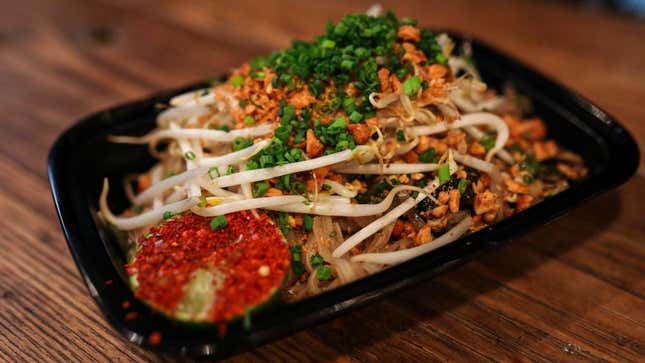
The statistics around pandemic-related restaurant closures are nothing short of staggering: Fortune reported early this year that 110,000 bars and restaurants shuttered in 2020, and the sad fact is that even more establishments have likely closed since that data was first shared. During this time of upheaval within the food and beverage industry, it’s helpful to look for silver linings, one of which is that all of us can point to at least one beloved spot that has survived the unthinkable. And according to Nation’s Restaurant News, one important way that restaurants weathered the pandemic—and continue to do so—was through its packaging.
As dining rooms shuttered across the country in accordance with social distancing and mask mandates, restaurants pivoted to delivery, takeout, curbside pickup—you already know that part. But it turns out that for every savvy operational switch-up, equally savvy packaging decisions were also in play.
For example, high-end Chicago restaurant group RPM had to think of a method for transporting its fancy steak dinners and Italian fare all the way to people’s homes without sacrificing quality. The solution? Switch from plastic takeout containers to aluminum ones that could be transferred directly into customers’ own ovens for reheating.
In New York City, Osteria Morini specializes in fresh-made pastas. But those are notoriously hard to deliver, because over time, the cooked noodles absorb all the sauce like a sponge and the meal arrives at your doorstep looking like one big, congealed mass. So the restaurant invested in new, deeper bowls, into which more sauce could be added—more than the noodles could soak up in transit.
Finally, at Chicago-based Pizzeria Portofino (another restaurant in the RPM group), packaging became a sort of calling card. Pizza is already a very delivery-friendly food, and there’s really no improving upon the classic pizza box. But Portofino added eye-catching artwork to its boxes in an array of bright colors, a move intended to make the restaurant stand out from the pack and stick in customers’ minds the next time they think to order a pizza. Wouldn’t it be a pleasant surprise to receive dinner in such a lovely vessel?
Beyond these packaging innovations, the NRN article talks about other clever moves undertaken by restaurants to make it through dining room closures and assorted business challenges, and it’s well worth a read. I know that next time I bring home a perfectly cooked, piping-hot entree, I’ll have a newfound appreciation for all the creative thinking that ensured its arrival.